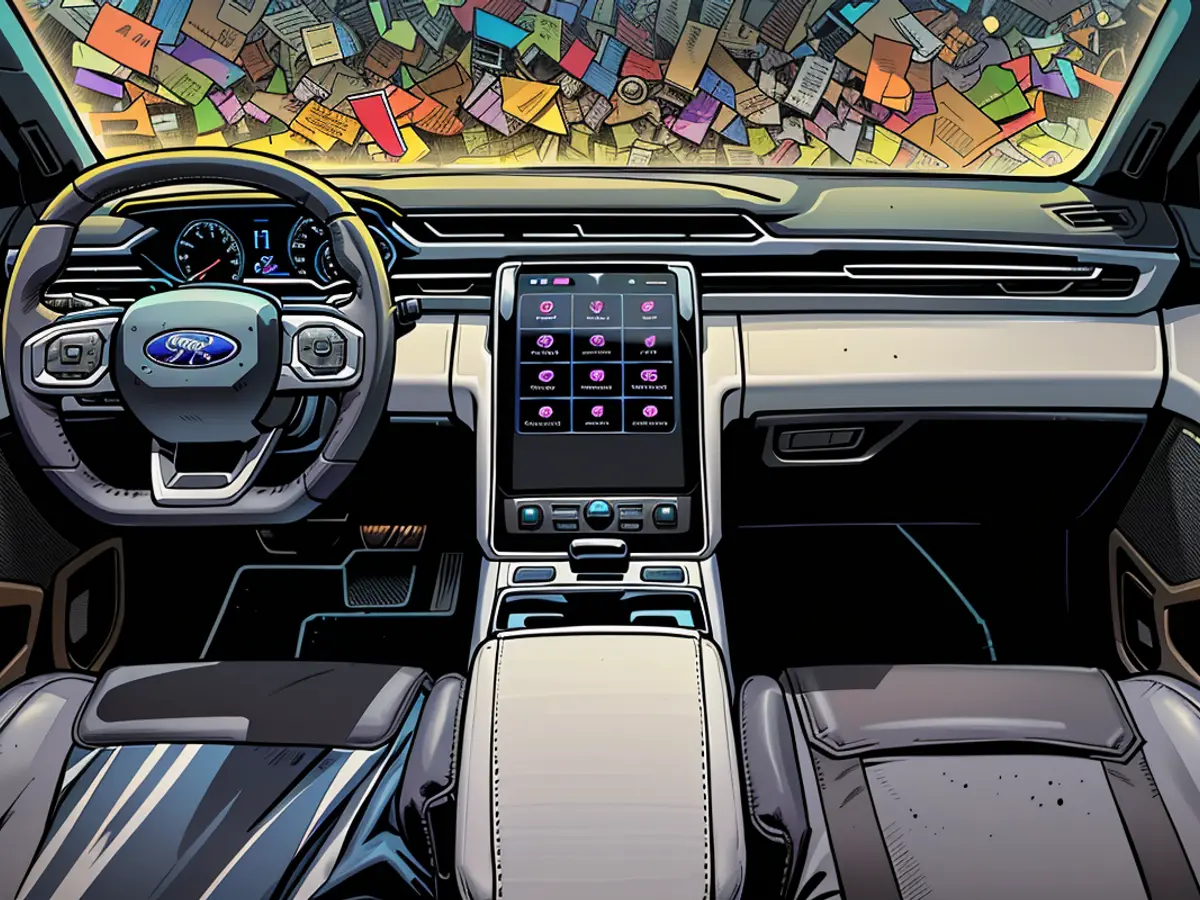Ford Explorer RWD Extended Range comes with VW technology
The Ford Explorer is back. Ford is borrowing technology from VW for this. This shouldn't be a problem. The Ford Explorer Extended Range RWD is like the handsome brother of the ID.4. However, the cost pressure is also evident here.
Ford is pushing hard to get into the electric future, but it's coming late to the game. In Europe, there will soon only be highly electrified passenger car models. During the transformation, a recurring pattern is emerging. Volume-strong, less profitable models like the Fiesta or Focus are being sacrificed to crossover models that promise more profit. Successful brand names from the company's history are simply being recycled. To the less successful Mustang Mach-E, new E-models and full hybrids are being added in quick succession. The electric Explorer with a large battery is now the first to make its debut, priced from 49,500 Euro.
The Explorer is one of the models that paved the way for the successful SUV and crossover class for Ford since the early 1990s. It was a rugged SUV with a frame chassis and all-wheel drive, to which luxurious car ingredients were added. Over the generations, it was one of the most popular Ford models in North America. However, due to its size and lack of suitable powertrains, it was never particularly successful in Europe and disappeared from the market briefly in the early 2000s.
Ford borrows MEB platform from Volkswagen

Starting now, the new midsize SUV from the two-billion-euro converted plant in Cologne can carry this famous name. It has more in common with the VW ID.4 than with its namesake on the American home market. For the costly and resource-intensive relaunch as an electric brand, Ford in Cologne is relying on external help. Instead of an expensive in-house development, they are borrowing the MEB platform from Volkswagen. The two brands are already closely connected in the commercial vehicle sector with Ford Transit and VW Transporter or Ford Torneo and VW Caddy.
Optically, the borrowing relationship is not recognizable. The Explorer looks not only more modern but is also 4.47 meters long, making it a half segment smaller. This comes at the expense of cargo space, but it positions the Ford below the competition. It is available with rear-wheel or twin-motor all-wheel drive. All versions will be offered as Extended Range at market launch, either with rear-wheel drive and a 77 kWh battery or with twin-motor all-wheel drive and a slightly larger 79 kWh battery. By the end of the year, a leaner Standard-Range version with a 52 kWh battery will round out the powertrain lineup.
Range of up to 602 kilometers

The single-motor Extended Range has a 210 kW/286 PS powerful motor that, in combination with the battery, should provide a range of up to 602 kilometers. In the higher trim level, the range drops by 30 kilometers, while it is 40 km lower for the all-wheel-drive versions. During our test drive with the Extended Range RWD, we achieved a consumption of around 18 kWh, which corresponds to a real-world range of almost 430 kilometers. The all-wheel-drive version can be charged with a decent power of 185 kW in 26 minutes from 10% to 80%, while the RWD version charges with an average power of 135 kW at the peak and takes about 28 minutes from 10% to 80%. At home, it takes more than seven hours to charge the full battery with a 11-kW charging station.
With the new Explorer, Ford lives up to its reputation of building cars with agile suspension. The technical changes compared to the Volkswagen ID.4 primarily concern the suspension, dampers, and electronics. It is still an midsize SUV from Ford. However, it drives very balanced and quietly, with minimal rocking, rolling, or wind noise. In the city, it moves quickly and has a small turning radius, allowing it to master tight maneuvers. Among the few criticisms are that the steering feels a bit light. On winding country roads and in the city, it is unfortunate that there is no full one-pedal driving mode, but only a relatively weak regenerative braking level.
Not much space inside, neither in the front nor the back

The interior space is not particularly generous for an EV in the front or the rear. The central touchscreen attracts attention. It dominates with almost 15 inches the center console, can be manually tilted, and provides additional, lockable storage space. The screen resolution is excellent, and the graphics are clear, but due to the small icons, it is not easy to operate. The rest of the interior feels similar to VW models from a tactile perspective: sufficiently comfortable, but arguably austere and with obvious cost-saving efforts in materials and processing. Among the nice additions is the ability to create smaller interior elements using a 3D printer. Instead of a beverage holder, Ford provides print files for multi-purpose items or storage boxes for free on the internet.
To the standard equipment belong a heated steering wheel and front seats, a two-zone climate automatics, as well as massage and memory functions for the 12-way adjustable driver's seat. Apple CarPlay and Android Auto are also on board. A multitude of sensors and cameras provide the basis for a range of assistance systems. Among the options are a head-up display, a 360-degree camera, a lane change assistant, and a lane keeping assistant. An energy-saving heat pump for climate and heating is also available at an extra cost.
Ford is on its way to becoming an electric vehicle brand. In doing so, it preserves much of its old spirit. The Explorer offers a high degree of ride dynamics and pairs it with austerely but practical interior. It also looks better than its platform siblings at VW and, thanks to good equipment, is also price competitive.

Technical Data - Ford Explorer Extended Range RWD
- Electric midsize SUV with five seats
- Length: 4.47 meters, width with mirrors 2.06 meters (with folded mirrors: 1.95 meters), height: 1.63 meters, wheelbase 2.68 meters, trunk volume: 427-1422 liters
- Electric motor, 210 kW/286 PS, maximum torque 545 Nm, battery with 77 kWh, WLTP range: 555 km, Single-speed automatic transmission, Rear-wheel drive, Top speed 180 km/h, 0-100 km/h: 6.4 s, DC charging up to 135 kW (from 10 to 80% in 28 min), AC charging up to 11 kW (5 hours 21 minutes), WLTP consumption: 15.1-13.9 kWh/100 km, CO2 emissions: 0 g/km
- Price: from 49,500 Euro
- Ford is leveraging Volkswagen's MEB platform for its new electric Explorer, demonstrating a strategic partnership between the two automakers in the transition to electromobility.
- The electric Ford Explorer, powered by an Extended Range RWD system, is part of Ford's push to offer a diverse range of electrified models, including E-models and full hybrids, to compete in the growing market for electric SUVs.
- In the realm of electric SUVs, the electric Ford Explorer, with its impressive range of up to 602 kilometers and competitive pricing, positions itself as a compelling option for customers seeking a balance between performance and value, drawing upon Ford's reputation for building agile and high-performing vehicles.









